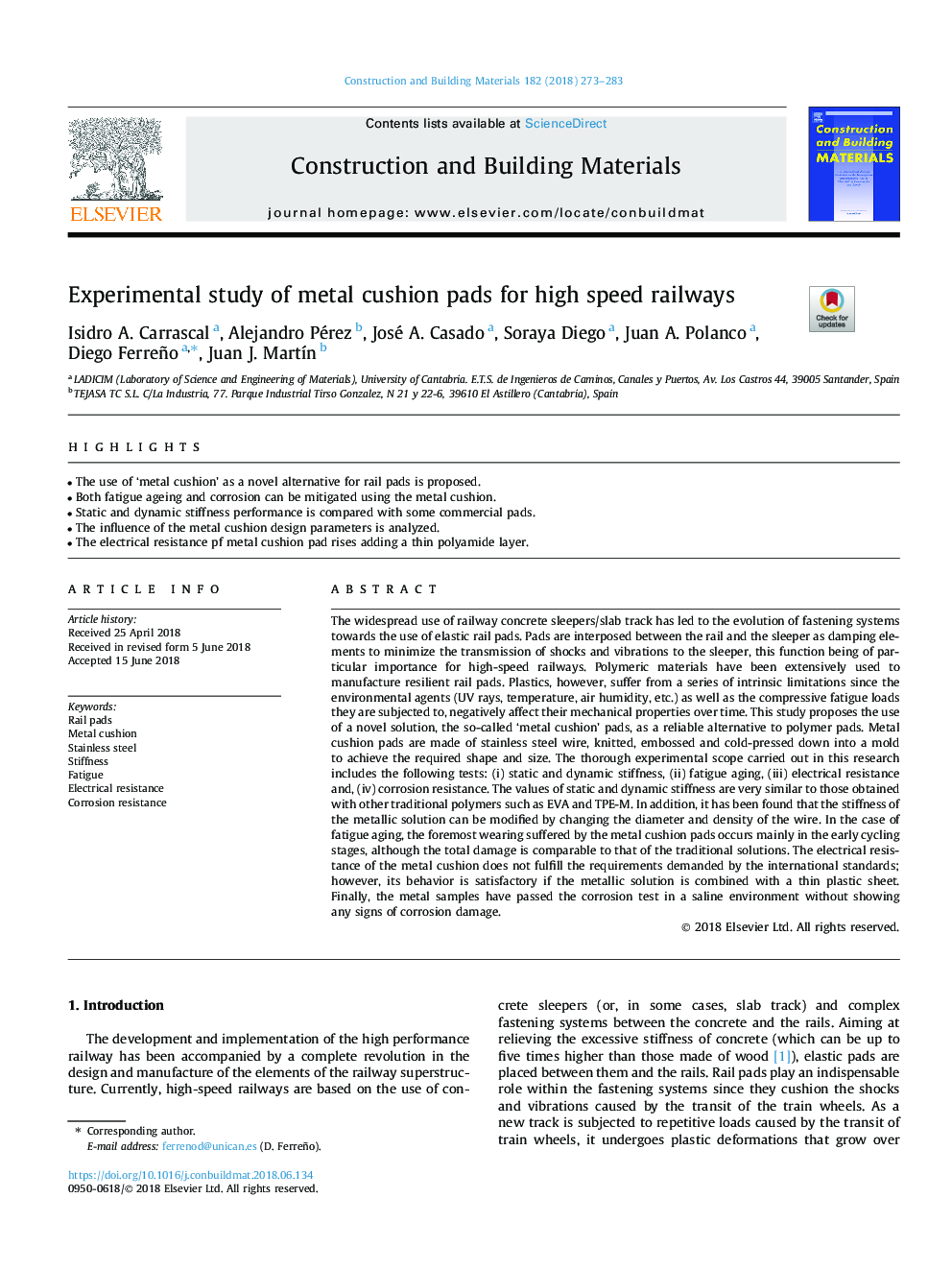| کد مقاله | کد نشریه | سال انتشار | مقاله انگلیسی | نسخه تمام متن |
|---|---|---|---|---|
| 6712169 | 1428724 | 2018 | 11 صفحه PDF | دانلود رایگان |
عنوان انگلیسی مقاله ISI
Experimental study of metal cushion pads for high speed railways
ترجمه فارسی عنوان
مطالعه آزمایشی پد های فلزی بالشتک برای راه آهن های با سرعت بالا
دانلود مقاله + سفارش ترجمه
دانلود مقاله ISI انگلیسی
رایگان برای ایرانیان
کلمات کلیدی
قطارهای راه آهن، کوسن فلزی، فولاد ضد زنگ، سفتی، سختی، خستگی، مقاومت الکتریکی، مقاومت در برابر خوردگی،
موضوعات مرتبط
مهندسی و علوم پایه
سایر رشته های مهندسی
مهندسی عمران و سازه
چکیده انگلیسی
The widespread use of railway concrete sleepers/slab track has led to the evolution of fastening systems towards the use of elastic rail pads. Pads are interposed between the rail and the sleeper as damping elements to minimize the transmission of shocks and vibrations to the sleeper, this function being of particular importance for high-speed railways. Polymeric materials have been extensively used to manufacture resilient rail pads. Plastics, however, suffer from a series of intrinsic limitations since the environmental agents (UV rays, temperature, air humidity, etc.) as well as the compressive fatigue loads they are subjected to, negatively affect their mechanical properties over time. This study proposes the use of a novel solution, the so-called 'metal cushion' pads, as a reliable alternative to polymer pads. Metal cushion pads are made of stainless steel wire, knitted, embossed and cold-pressed down into a mold to achieve the required shape and size. The thorough experimental scope carried out in this research includes the following tests: (i) static and dynamic stiffness, (ii) fatigue aging, (iii) electrical resistance and, (iv) corrosion resistance. The values of static and dynamic stiffness are very similar to those obtained with other traditional polymers such as EVA and TPE-M. In addition, it has been found that the stiffness of the metallic solution can be modified by changing the diameter and density of the wire. In the case of fatigue aging, the foremost wearing suffered by the metal cushion pads occurs mainly in the early cycling stages, although the total damage is comparable to that of the traditional solutions. The electrical resistance of the metal cushion does not fulfill the requirements demanded by the international standards; however, its behavior is satisfactory if the metallic solution is combined with a thin plastic sheet. Finally, the metal samples have passed the corrosion test in a saline environment without showing any signs of corrosion damage.
ناشر
Database: Elsevier - ScienceDirect (ساینس دایرکت)
Journal: Construction and Building Materials - Volume 182, 10 September 2018, Pages 273-283
Journal: Construction and Building Materials - Volume 182, 10 September 2018, Pages 273-283
نویسندگان
Isidro A. Carrascal, Alejandro Pérez, José A. Casado, Soraya Diego, Juan A. Polanco, Diego Ferreño, Juan J. MartÃn,
